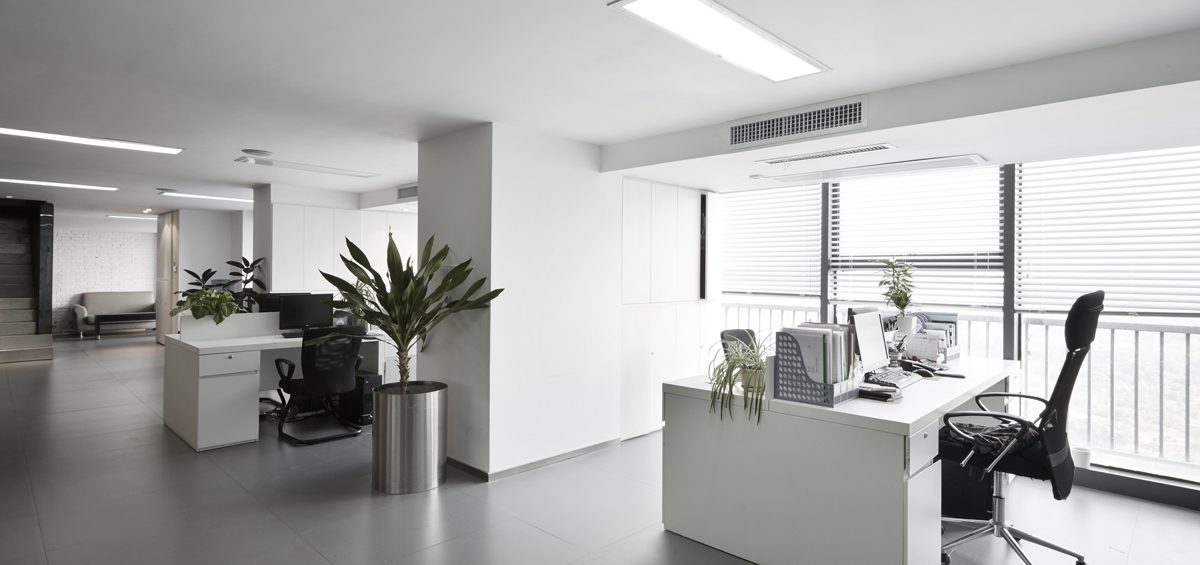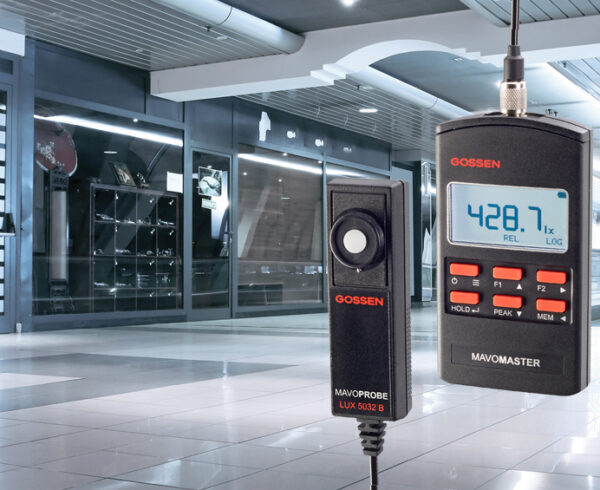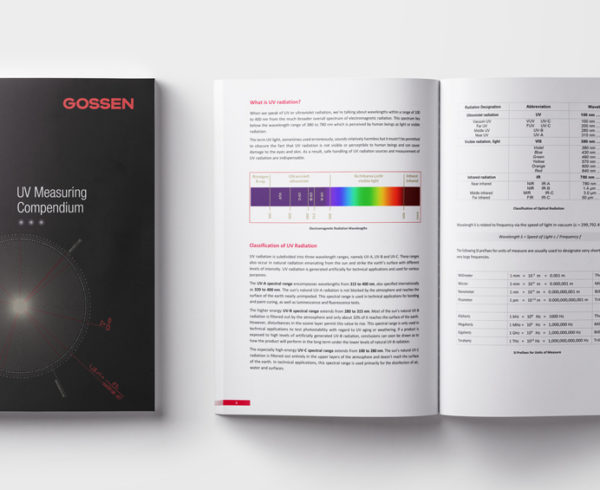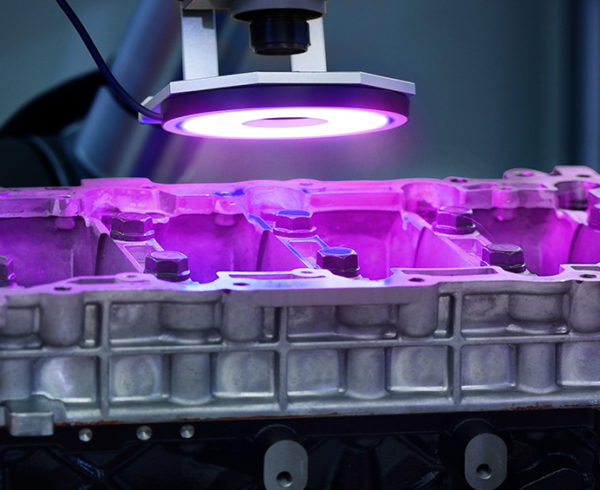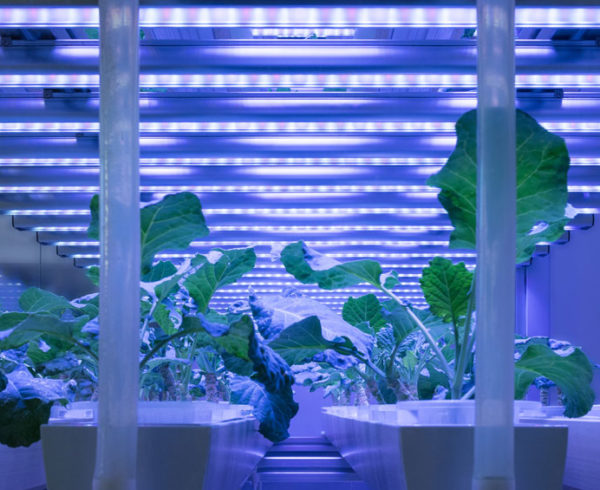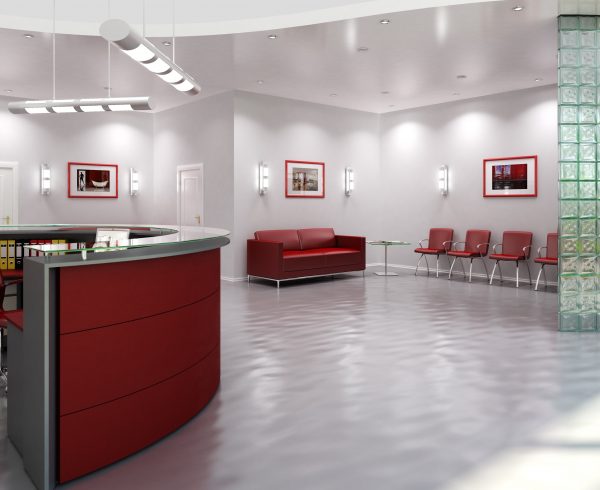The German workplace ordinance specifies which factors the employer must take into consideration when setting up and operating workplaces with reference to employee safety and occupational health. It can be downloaded free of charge from the website of the German Federal Ministry of Justice and Consumer Protection at www.gesetze-im-internet.de. The ordinance is in line with the regulatory framework of the European workplace guideline, by means of which safety goals and general requirements are set forth, but no detailed specifications are stipulated. And thus the respective company is allowed a given amount of elbowroom for individualized work safety measures. The following requirements with reference to workplace lighting are included in the appendix, “Workplace Requirements”:
3.4 Lighting and Visual Contact
- If at all possible, workplaces must receive adequate amounts of daylight and be equipped with fixtures which furnish suitable artificial light which is sufficient for assuring employee safety and occupational health.
- The lighting systems must be selected and arranged such that they cannot result in any accident safety risks or health hazards.
- Workplaces at which employees are exposed to any danger of accident in the event that normal lighting should fail must be equipped with adequate safety lighting. Persons who intentionally or negligently violate any of the points included in paragraph 9 of the ordinance commit a regulatory offense. Persons who thus intentionally endanger the lives and/or health of the respective employees are liable to prosecution.
Technical Rules for Workplaces – ASR
In order to make it easier for companies and the responsible authorities to implement the workplace ordinance in actual practice, the “workplaces committee” prepares “workplace rules” (ASR) which are published by the German Federal Ministry of Labor and Social Affairs. If the employer complies with these technical rules, he can assume that the corresponding requirements set forth in the ordinance are fulfilled. The two following workplace rules are relevant with regard to workplace lighting. They can be downloaded free of charge from the website of the German Federal Institute for Occupational Safety and Health at www.baua.de.
ASR A3.4, Technical Rules for Workplaces – Lighting
ASR A3.4 enumerates the requirements from section 3.4 of the appendix to the workplace ordinance and is based on the trade association rule set forth by German public accident insurance BGR 131-2: Natural and artificial lighting at workplaces – Part 2: Guideline for planning and operating lighting systems. In isolated cases ASR A3.4 deviates from DIN EN12464, which establishes a basis for planning lighting systems, but without taking requirements for employee safety and occupational health into consideration. The guideline specifies requirements for illuminance, glare restriction, color rendering, flicker and shadow with regard to illumination with daylight, as well as with artificial lighting in buildings and out of doors. Further instructions regarding the operation and maintenance of the lighting system, and regarding rough measurement with classified luxmeters (at least class 3), are also included. Minimum values for illuminance and color rendering index Ra are specified in appendix 1 to ASR A3.4 for various work rooms, workplaces and activities. Adequate values for outdoor work areas, workplaces and activities can be found in appendix 2.
ASR A3.4/3 – Safety Lighting, Optical Safety Guidance Systems
ASR A3.4/3 enumerates the requirements set forth in the workplace ordinance for setting up and operating safety lighting and optical safety guidance systems. In addition to general specifications, concrete values are also included for illuminance and uniformity of illumination, as well as it duration of availability and color rendering. Further instructions for operation, maintenance and inspection of the system are included as well.
Trade Association Rules
The federal government and the trade associations establish specifications in Germany which are binding for companies and stipulate how lighting has to be laid out at workplaces. As opposed to the applicable standards which are used primarily for planning and installing lighting systems, they have a legally binding character. The trade association rules can be downloaded free of charge from the website of the German Federal Ministry of Justice and Consumer Protection at www.gesetze-im-internet.de.
BGR 131 – Natural and Artificial Lighting at Workplaces
This trade association rule is comprised of two parts in order to make it easier to understand for small and mid-sized businesses, and thus easier to implement. This is due to the complexity of the rule, because it doesn’t make reference to any standards and describes the requirements explicitly. Requirements for lighting are only dealt with from the standpoint of employee safety and occupational health. Reference is only made to product or production related requirements when necessary.
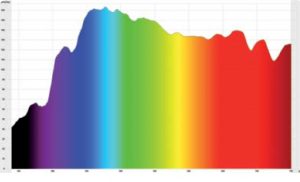
Daylight afternoon
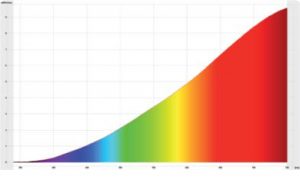
Halogen lamp
Part 1: Procedural Guidelines for Companies
This part of the rule addresses entrepreneurs who are laypersons in most cases, but who are nevertheless responsible for compliance with the rule. The fundamentals of good lighting are presented in simple, understandable terms, important core concepts regarding the planning and operation of lighting systems are explained and options for the implementation of practical lighting concepts are pointed out.
Part 2: Guideline for Planning and Operating Lighting Systems
This part also addresses entrepreneurs, but in light of the utilized formulations and its regulatory depth, it’s apparent that it’s more suitable for the expert. It’s used for the most part by internal or external specialists for work safety, lighting experts or lighting designers when implementing the guideline. Part 2 includes the latest ergonomic findings with regard to lighting and describes the implementation of the lighting concepts in part 1 in concrete terms. The lighting concepts range form formerly common room and work area specific lighting, right on up to sub-area specific lighting. Flexible combination of the individual concepts leads to the practical adaptation of lighting for workplaces, which can be matched to the eyesight and the individual needs of the employee. Due to the fact that the guideline is limited to work safety and health protection aspects, it includes only a few specifications for required illuminance values. The work area and surrounding areas are dealt with on the basis of three maintenance values each. Other areas are broken down into ten representative classes for each of which one maintenance value is stipulated. Other requirements and recommendations for qualitative aspects of lighting include illumination uniformity, luminance distribution, glare restriction and reflections, body rendering (shadow detail) and the avoidance of irritating shadows, light color and color rendering, as well as the absence of flicker. The guideline is rounded out with a treatment of planning, setup and maintenance, as well as testing and measuring of lighting systems.
New Challenges for Measuring Technology
Whereas with conventional lighting technology it was sufficient to check illuminance and luminance, today it’s also necessary to take spectrum, chromaticity, color temperature, color rendering index and flicker into consideration. The brightness and color of LEDs vary due to manufacturing processes, for which reason they have to be tested, classified and characterized during production and in their final applications. Daylight, incandescent lightbulbs and halogen lamps all have one thing in common: excellent color rendering with the highest possible index of 100. Due to their spectra, LEDs and fluorescent tubes don’t fare as well in this respect. Individual spectral ranges dominate in the case of fluorescent light, or certain spectral ranges are missing, which influences color vision. The component manufacturers have tackled these new challenges and miniaturized spectral sensors to such a degree that these MOEMS (micro-opto-electro-mechanical systems) are permitting the development of easy-to-handle, and above all affordable spectral photometers.
Extensive Product Portfolio
Gossen Foto- und Lichtmesstechnik GmbH offers a full line of luxmeters and luminance meters, as well as a spectrometer, which are used for testing in accordance with the above mentioned standards and regulations. As a calibration laboratory, Gossen also issues factory calibration certificates for illuminance and luminance, as well as DAkkS calibration certificates for illuminance.
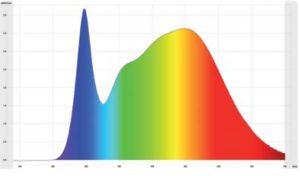
LED neutral white
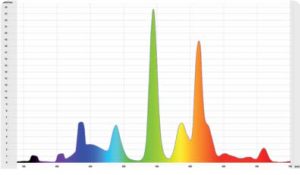
Fluorescent tube TL8 840

